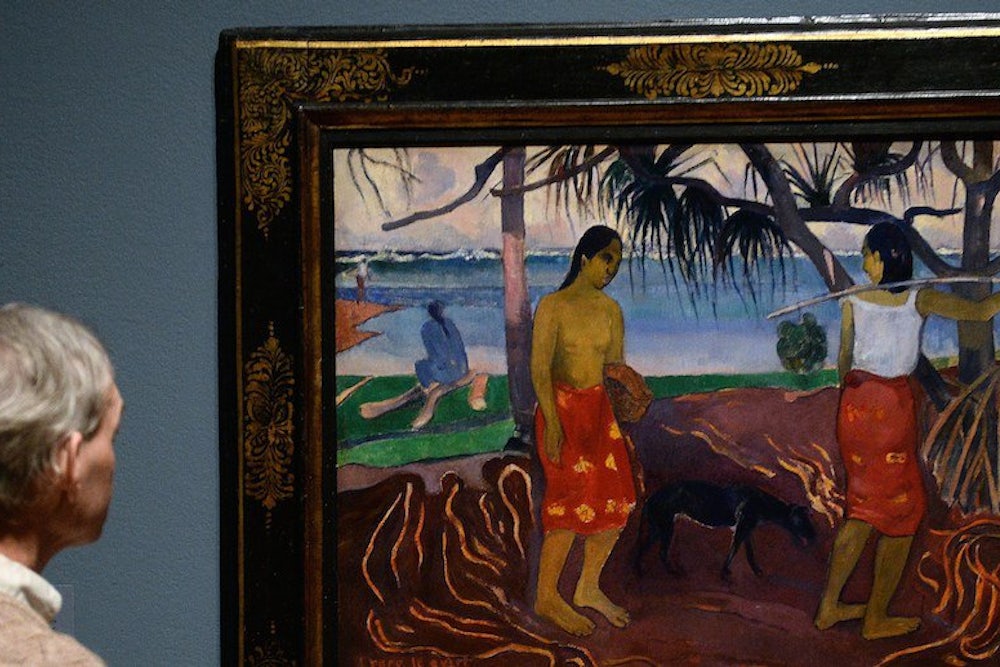Paul Gauguin was a post-Impressionist painter—that is, abstract and symbolic—best known for his boldly colored paintings of life in Tahiti in the late nineteenth century. For years, though, both art historians and curators have been mystified by his lesser-known complex prints. Even though the printmaking process makes it easy to create multiple copies of the same print, Gauguin almost never made two that look the same.
At a presentation at American Association for the Advancement of Science (AAAS) annual meeting this weekend, Northwestern University computer scientist Oliver Cossairt presented a new technique for examining the surface texture of Gauguin’s prints; Cossairt and his team used Gauguin’s “Nativity (Mother and Child Surrounded by Five Figures)”, painted in 1902, to test their method.
The team used a camera, a light bulb, and a computer to examine the texture of Gauguin’s print. This allowed them to “peel away the color” from the surface of the painting in order to study it without pigment. “We’re capturing 3D information about the prints,” Cossairt said. From their findings, they hypothesize that Gauguin used a monotype printing process—meaning that he created prints by placing paper on an inked surface and drawing on the back of it, transferring ink onto the paper where the artist applied his pencil. They also believe they discovered how Gauguin created certain white lines in his prints.
This new data allowed the researchers to establish the chronological steps in the creation of “Nativity”. To prove their conjecture, the team followed their interpretation of Gauguin’s method in an Art Institute of Chicago lab, managing to produce a print very similar to the original.
Although there are already ways to look at surface topography, Cossairt said the technique they developed is something conservation scientists anywhere can try. “It’s really off the shelf equipment that all conservation scientists have access to in their labs,” he said.
The Northwestern team’s procedure is only the most recent development in a wave of new scientific techniques used to better study works of fine art. Francesca Casadio, a senior conservation scientist at the Art Institute of Chicago, said many paintings go through a number of noninvasive imaging techniques: x-rays, infrared radiation, and even pigment analysis.
“The types of tools, much like in medicine, are driven by the questions,” she said. “This is really a practice now of the twenty-first century. It’s hard to go without technology because there’s just so much you can see and learn.”
Casadio also believes improving our ability to examine paintings—and knowing more about their historical context—will impact how art is presented in art museums in the future. For example, the Art Institute will present Cossairt’s research from “Nativity” and additional Gauguin prints as part of a major Gauguin exhibit in 2017. Casadio also notes that some museums are experimenting with augmented reality apps, and apps that will let you point your iPhone at paintings to learn more about them.
Casadio acknowledges that not everyone might be excited about mixing history and art—some people are only there for the aesthetics. However, Casadio hopes that by providing people with more information about artwork, museums might attract more diverse crowds and shed their elitist image.
“To me, it’s really a way of making the art relevant to people, which is important because art is a very important aspect of human beings,” she said. “The nice thing is, if you want to preserve the art and feel like too much history takes away [from the experience], you can just elect to not press the button,” Casadio said. But for the more curious among us, a more historical art gallery experience may be only a few years away.
